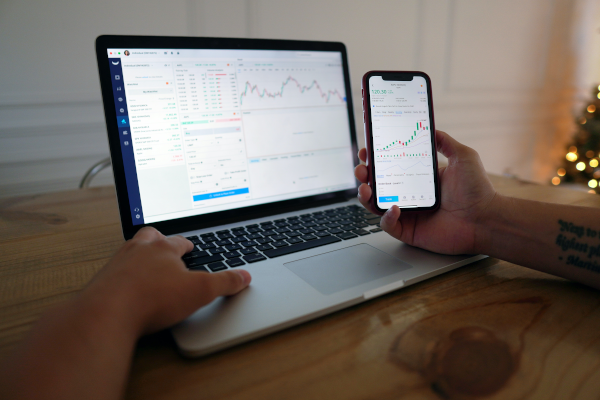Artprice clarification regarding the article published by Artemundi Global Fund on the demise of auction houses.
Thierry Ehrmann, founder and CEO of Artprice, wishes to clarify and remove any misunderstanding or confusion between his company and the Artemundi Global Fund (AGF) following the latter's publication of an article on the demise of auction houses, and particularly of Christie's and Sotheby "For whom the bell tolls: the death of Christie's and Sotheby's"
In the first place, Artprice's CEO wishes to state that it has no capital links, interests, contractual agreement or partnership with Artemundi Global Fund whatsoever and that there is absolutely no link between Artprice and the afore-mentioned publication which highlights some of the economic and social realities that are now inevitable for auction houses in the Internet era.
Five years ago, Artprice itself drew attention to the inevitable demise not of auction houses that have been its partners for 25 years as such, but of auction rooms, in the physical sense, as places where artworks have been sold for centuries via a process of competitive bidding. Artprice suggested that the general public, including professionals, amateurs and art collectors, is likely to gradually shift away from sales rooms, large or small, and migrate to the Internet which now has roughly 3 billion users worldwide.
The confusion between Artprice and the Artemundi Global Fund seems to stem from the fact that, firstly, Artprice's article of five years ago used similar semantics, and, secondly, the article by Artemundi Global Fund refers to statistics published by Artprice.
That Artemundi Global Fund makes perfectly legal use of Artprice data does not mean that Artprice supports or agrees with the contents of AGF's article, even if the latter is undoubtedly based on serious data with substantiated and interesting arguments. Remember that in the context of its historical activity and as world leader in art market information, Artprice provides statistical information every year to 6,300 printed and broadcast media as well as to a large number of research bodies.
Artprice's position is very clear: the Internet represents for the auction houses – which have always been its historical partners and clients – a significant cultural and economic shock, just as it has been for the printed press.
In this context, Artprice believes the auction houses are making the right decision by allying themselves with Artprice and particularly with its Standardised Marketplace (protected by intellectual property rights) in order to conduct a mutally beneficial cyber-metamorphosis, since the majority of them do not have the means to build adequate infrastructures and/or because they do not have the copyright and Sui Generis rights to reproduce Artprice's Standardised Marketplace.
In fact, the leaders of the top global auction houses are fully aware that the middle market is now on Internet. In an interview with the French economics daily “Les Echos” earlier this year, the CEO of Christie's unambiguously stated that “The future of the middle market, i.e. of works priced between €800 to €10,000, is on the Net”. According to Artprice, this middle market represents 81% of global art market auction transactions.
Pursuing this logic, Artprice can only observe (now that it is also physically established in China), that for the large Chinese auction houses that have emerged since the 2000s in contrast to the centuries-old Anglo-Saxon auction houses, the concept of physical auction rooms does not really make much sense at a time when all the major players with substantial purchasing power on the global art market are effectively using the Internet and hence do not need to physically visit an auction house. Asia, which will soon represent around 70% of the global art market, is in effect showing the way forward for the 21st century.
Moreover, Artprice, via its partnerships, can already confirm that in 2012 China will totally belittle the American and European art market after already substantially exceeding it in 2011 (China 41.4%, U.S. 23.6%, UK 19.4%, France 4.5%).
For information purposes only, Artprice provides a link to Artemundi Global Fund's full text on the demise of auction houses in English. The page also includes links to French and Spanish versions of the same article (original written Spanish) http://www.artemundigroup.com/2012/10/for-whom-the-bell-tolls-the-death-of-chrisites-and-sothebys/) http://www.artemundigroup.com
Original Version in English "FOR WHOM THE BELL TOLLS: THE DEATH OF CHRISTIE'S AND SOTHEBY'S
"Progress finally has caught up with the major art auction houses. Consider this carefully. You are reading that Christie's and Sotheby's death sentence is about to be carried out. It is time for the art industry to either be ready for the future or be left behind? The concept of selling art at auction houses is an anachronism that has been held up by the traditions of art sales that have supported old forms and stodgy protocols for how to connect buyers and sellers.
The technology revolution is pretty much decimating every storied seller in every industry and the art auction houses are not immune to the revolution. It was inevitable. The auction house, a middleman that earns commissions that average 25 percent, has marked its own grave through its inefficiency. Just as fast the internet destroyed newspapers, the auction houses soon will be relegated to a footnote in the annals of history where the list of businesses that have died due to poor business judgment grows larger by the second.
For some, it is an incredible assertion that auction houses are dead when Sotheby's and Christie's have had recent record sales, but those who question these facts have not looked carefully at global auctions. While on its face, during the past five years gross auction market sales have been steady in terms of gross sales, closer scrutiny shows that the market has been buoyed by sales at the top 1 percent of the market which are not sustainable over time. To put this in perspective consider that in 2007 the global auction market reached its peak at $31.2 billion dollars while sales in 2011 were $29.9 billion dollars. The recent numbers, however, are misleading because of record prices such as Giacometti's L'Homme qui marche at $104 million dollars and Munch's The Scream at $119.9 million.
It is probable that in a healthier economic environment these prices would have not been achieved. In the art jargon, the Giacometti and Munch pieces are called objects of passion, which are “trophies” purchased by the super rich. According to Art Price, 58 percent of the total auction market revenue in 2011 came from 1% of all lots, i.e., the over inflated trophy art sales. Record prices for these trophy pieces certainly do not reflect the general market. For example, according to Clare McAndrew, of the 36.8 million art transactions in 2011 only 1,680 lots were valued over $1 million dollars. The bottomline is that the amount of auction market sales are misleading.
The simple fact is that auction houses have onerous overhead, which they are afraid to shed. You cannot blame them, but they have marked their own graves. Theirs is a fate that they can neither avoid nor, as their actions show, wish to avoid. You do not need to be Nostradamus to predict the future the art world. It is happening as this article is being written. Art funds are growing in value and in number. What began as an investment experiment in the late 70s has now been accepted as an institutionalized investment vehicle. Moreover, art funds have the resources to attract highly valued art portfolios and to form synergies with all the players of the art market, while auction houses are stepping on everybody´s toes.
Internet sales are changing the infrastructure of the market; in the last couple of years they have had a slow but steady growth. On average 5% of the auction bidding and 10% of dealer sales are done online. Furthermore, internet has increased the amount of information available to the public creating a more transparent and competitive environment.
Ask the auction houses this question: Why do we need you? What are you doing for me? The answer is increasing irrelevant as the auction houses try to hold onto a position that already has been rendered irrelevant. This means the auction houses are blinded by self-preservation and cannot be trusted when asked to evaluate your artworks because they have such a high stake in the art that is being sold.
1994 work in Sears a guy in college tells you're going out of business … The next great seller of electronics will not have a store. Will not have been in bunnies as of the last 200 years and will have a corporation with 200 Ivy league graduates. Yet that is exactly what will happen.
So what is the future? The traditional brick and mortar auction houses are dead; it is not a matter of if, but just how soon. Auction houses are an anachronism born of an age before the internet and proficient computer users. In the past, an auction house was an important location to connect a buyer and a seller. It was a place where accurate and real market prices were set. A seller was willing to pay a premium because there were limited means to reach buyers. But those days are gone. The auction house is an expensive middle man that has become an unnecessary transaction cost. The future is an art exchange with lower overhead where commissions will almost be zero. It will look more like the New York Stock Exchange than Ebay or Amazon, but there is no doubt that the art market already has moved in this direction. Paintings will arrive in a centralized location,
be catalogued and inspected by experts, and then sales will be conducted. Javier Lumbreras".
About Artprice:
http://www.artprice.com (c)1987-2012 thierry Ehrmann
As of the close of markets on 21 December 2012, ARTPRICE will join the French SBF 120 stock market index. In the framework of its quarterly review of the Euronext Paris indices, the meeting of Scientific NYSE Euronext Committee for Indices on 6 December 2012 decided to admit Artprice.com as one of the companies listed on the CAC Mid 60 and the SBF 120 indices. http://www.artprice.com (c)1987-2012 thierry Ehrmann
Artprice is the global leader in databank on Artprices and indices with more than 27 million indices and auction results covering more than 500,000 artists. Artprice Images® offers unlimited access to the largest Art Market resource in the world, a library of 108 million images or engravings of artworks from 1700 to the present day along with comments by Artprice's art historians. Artprice permanently enriches its databanks with information from 4,500 international auction houses and auctioneers and publishes a constant flow of art market trends for the main news agencies and 6,300 international written media. For its 1.953 million members (member log in),
Artprice posts standardized adverts in what is today the world's leading Standardised Marketplace® for buying and selling works of art by private contract or at auctions -regulated by French law alinéas 2 et 3 de l'article L 321.3 du code du commerce- (source Artprice).
Discover the Alchemy and the universe of Artprice http://web.artprice.com/video/, which headquarters are the famous Museum of Contemporary Art, the Abode of Chaos
Artprice is listed on Eurolist B by Euronext Paris (SRD long only): Euroclear: 7478 - Bloomberg: PRC - Reuters: ARTF
Artprice releases: http://serveur.serveur.com/press_release/pressreleaseen.htm
Follow all of the art market's news with Artprice on Twitter:
http://twitter.com/artpricedotcom/
Communiqué intégral et original au format PDF :
http://www.actusnews.com/documents_communiques/ACTUS-0-30339-microsoft-word-position-et-analyse-d_artprice-sur-la-version-originale-en.pdf
<!-- 90 -->
© Copyright Actusnews Wire
Recevez gratuitement par email les prochains communiqués de la société en vous inscrivant sur www.actusnews.com
Receive by email the next press releases of the company by registering on www.actusnews.com, it's free





